This guide will show you how to save money by saving energy with dehumidifiers. It has many pages of energy tips for buying and using portable dehumidifiers, and shows how to use whole house dehumidifiers more efficiently. Dehumidifiers are mechanically similar to air conditioners and are also expensive to use. With the help of this guide, you may be able to use portable dehumidifiers in place of your whole house dehumidifier to lower your electric bills. bbbbbbbbbb bbbbbb bbbbbbb bbbbbb bbbbbbbbb bbbbbbb fffbbbbbbbbbb

BTable of Contents
BOther Posts on Home Energy
Residential Dehumidifier Basics
A whole house dehumidifier removes moisture for the whole house. It is
Portable dehumidifiers remove the humidity from a room, an open basement or an open first floor.
Whole house dehumidifiers are normally run only when the air conditioning is turned off, because air conditioning dries the air, making them unnecessary.
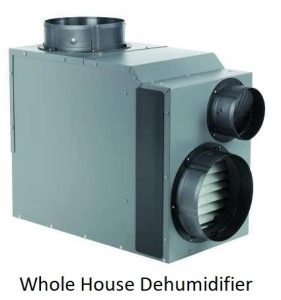
However, if the air conditioner is too large it may not effectively remove the humidity and the dehumidifier could then be run along with it. Running them together allows you to use less air conditioning if you set the temperature higher because a home is comfortable at a higher temperature if the humidity is low.
In the picture below, the dehumidifier is installed downstream of the furnace and air conditioner, but it could also be installed upstream. so it can only be run when the air conditioning is off,.
Whole house dehumidifiers, and all but the smallest portable dehumidifiers, remove moisture using the “refrigeration cycle”. This technology is also used by refrigerators, air conditioners and heat pumps, and all of these consume much electricity. In this technology, air is drawn in and runs over cold coils, moisture collects on the coils and it drips into a collection pan.

Most portable and whole house dehumidifiers are controlled by a humidistat, which detects the moisture in the air and turns the dehumidifier on and off to keep the moisture at the level selected.
A dehumidifier’s ability to remove water from the air is called it’s capacity. It is the amount of water it could remove in one day if it ran continuously. The average amount of water that a dehumidifier removes from the air will be a fraction of this. A typical portable model has a capacity of 30 pints, but may remove an average 10 pints of water per day.
The larger dehumidifiers have features making them suitable for use in a basement. They can be set to drain into a tank, which you must empty, or set to drain through a hose: into a floor drain, a sump (which has a sump pump), a utility sink or a basement shower, and in some cases through a hole in the wall. See How to Buy and Use a Portable Dehumidifier for Better Dehumidifier Energy Efficiency. Some models have a pump, allowing you to drain them up into a utility sink. If the model has no pump, you can build a shelf for it to let it drain into a utility sink .
Before buying a portable dehumidifier, you must check if the outlet it will be plugged into is on a branch circuit that can allow the amperage the dehumidifier will use. Add it’s amperage to everything else plugged into that circuit. Check what is on the circuit by shutting off it’s circuit breaker or removing it’s fuse, and checking which outlets are no longer providing power.
The largest models, which have a capacity of about 70 pints and can dehumidify an entire basement, draw about 6 or 7 amps. Most basement circuits allow 15 amps. An extension cord may be used to power a dehumidifier, but it must be an outdoor extension cord and it must be 14 gage wire or heavier, and should never run along a basement floor.
To buy and install a stand alone dehumidifier, see How to Buy and Use Portable Dehumidifiers for Better Dehumidifier Energy Efficiency and Energy Tips for Portable and Whole House Dehumidifiers.
Peltier Dehumidifiers
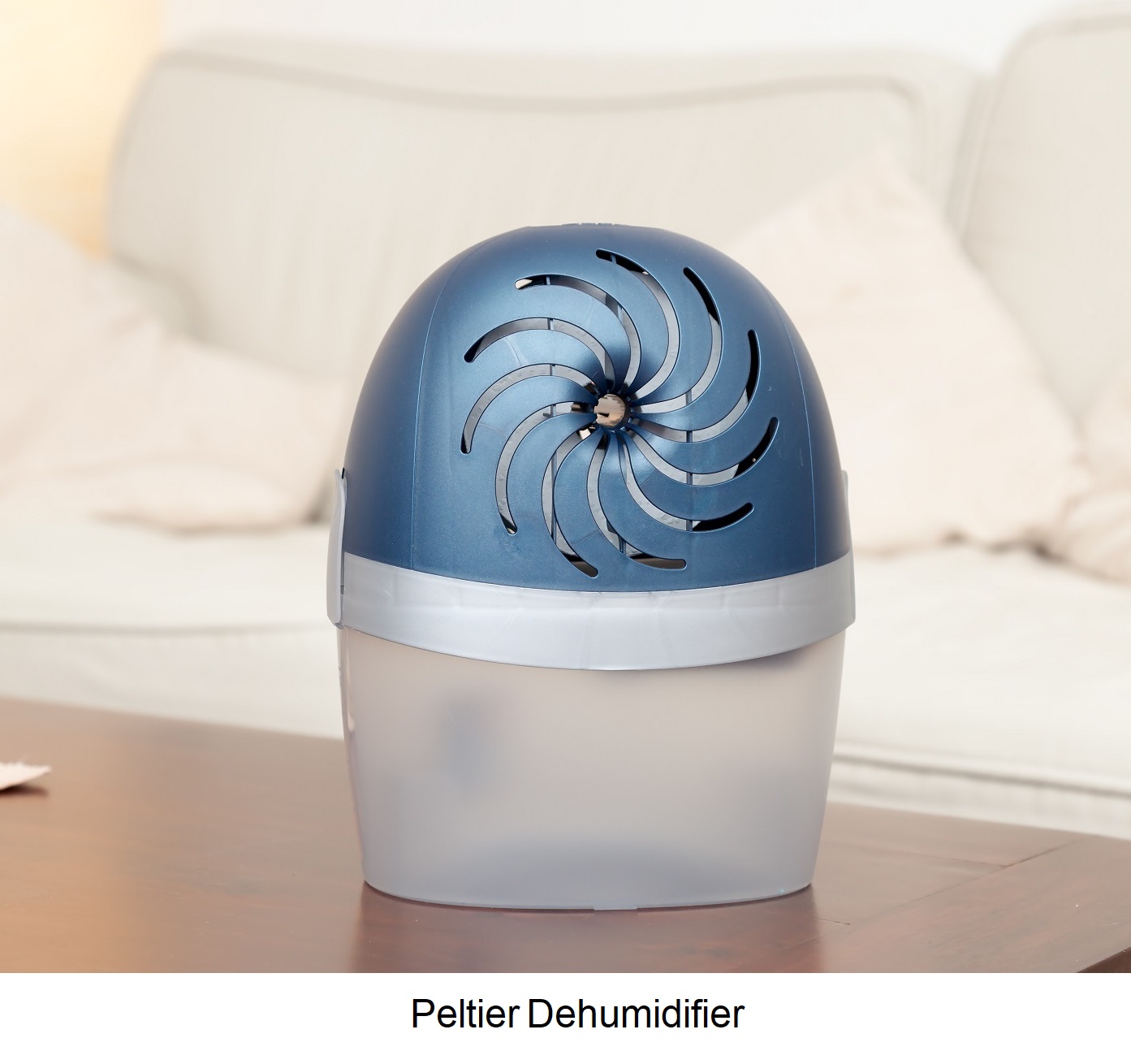
Peltier dehumidifiers, also called “thermo-electric dehumidifiers” are small, inexpensive, portable dehumidifiers which don’t use the refrigeration cycle. They dry the air by pulling it through large, cold fins, causing drops of water to condense on them. It drips into a pan and the air leaves the dehumidifier with a lower humidity.
The fins are made cold by the “thermoelectric effect”; when electricity passes through two dissimilar materials, one becomes warmer and the other becomes cooler. In a Peltier dehumidifier, a plate with the material that becomes cooler has large fins attached and the air is drawn through it with a fan.
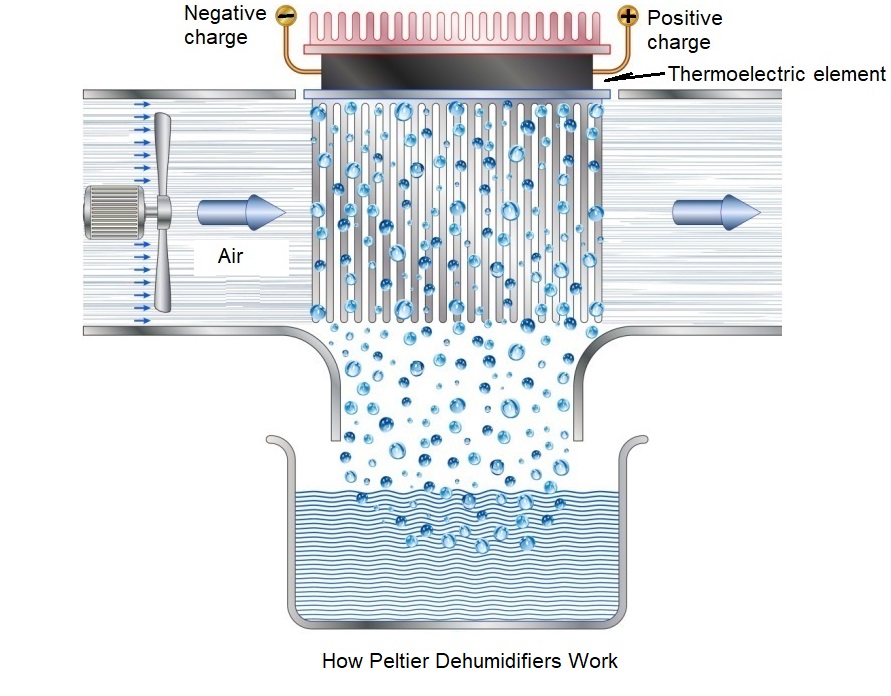
They use much more electricity per pint of water removed than conventional dehumidifiers, but they are the only type you can use if you need a very small dehumidifier which is quiet and inexpensive.
They are suitable for small bedrooms and closets. They are good for bedrooms because they are very quiet, and are popular because they are much less expensive to buy and to operate.
A typical Peltier dehumidifier uses only 30 watts, but removes only about 1pint (1/2 quart) of water in 24 hours. There are very large models which remove about 35 pints/day and and more, but these are less energy efficient than dehumidifiers that use the refrigeration cycle.
Why Use Dehumidifiers?
Both whole house dehumidifiers and portable dehumidifiers can make the home’s air drier with their electric cost partially or totally offset by the homeowners’ using less air conditioning. While running a whole house dehumidifier or one or two large portable dehumidifiers, you can set the thermostat temperature higher, saving electricity and saving you money, because you are comfortable at a warmer temperature when the air is drier.
The benefits of drier air include:
These signs show that the humidity level in your home may be too high:
How to Buy and Use Portable bb Dehumidifiers for Better bb Dehumidifier Energy Efficiency
What Size Portable Dehumidifiers Should You Buy for Less Energy Use?
Use the table below to estimate the capacity you will need, to save money each month by avoiding buying one larger than necessary. A smaller unit will use less electricity because it will cycle on and off less, and dehumidifiers use much electricity to cycle on. Also, larger units cost more and may be slightly noisier.
In rooms with cooler air temperatures, such as basements, the ideal relative humidity is 30 to 50 percent. In warmer rooms, the ideal relative humidity is 40 to 60 percent because the body tolerates humid air better when the temperature is warmer.
For an open basement, buy the largest model available at the stores where you shop, which will probably be 50 pint/day capacity, because an open basement is larger than any rooms and water often enters through basement walls on rainy days. If in doubt, check the relative humidity with a hygrometer.
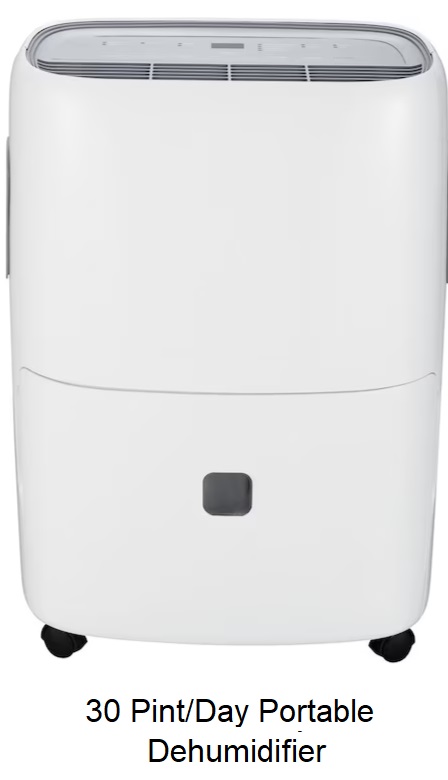
A large dehumidifier used in a basement can, in some homes, substitute for small dehumidifiers in bedrooms and other rooms. Dehumidifiers are not quiet, and in a basement this may not matter. Also, they can be set to drain automatically into a floor drain, sump or laundry sink. Also, there may be a suitable electric circuit in the basement but not in rooms where you would otherwise put dehumidifiers. See, Buy a 50-Pint or Larger Dehumidifier for an Open Basement
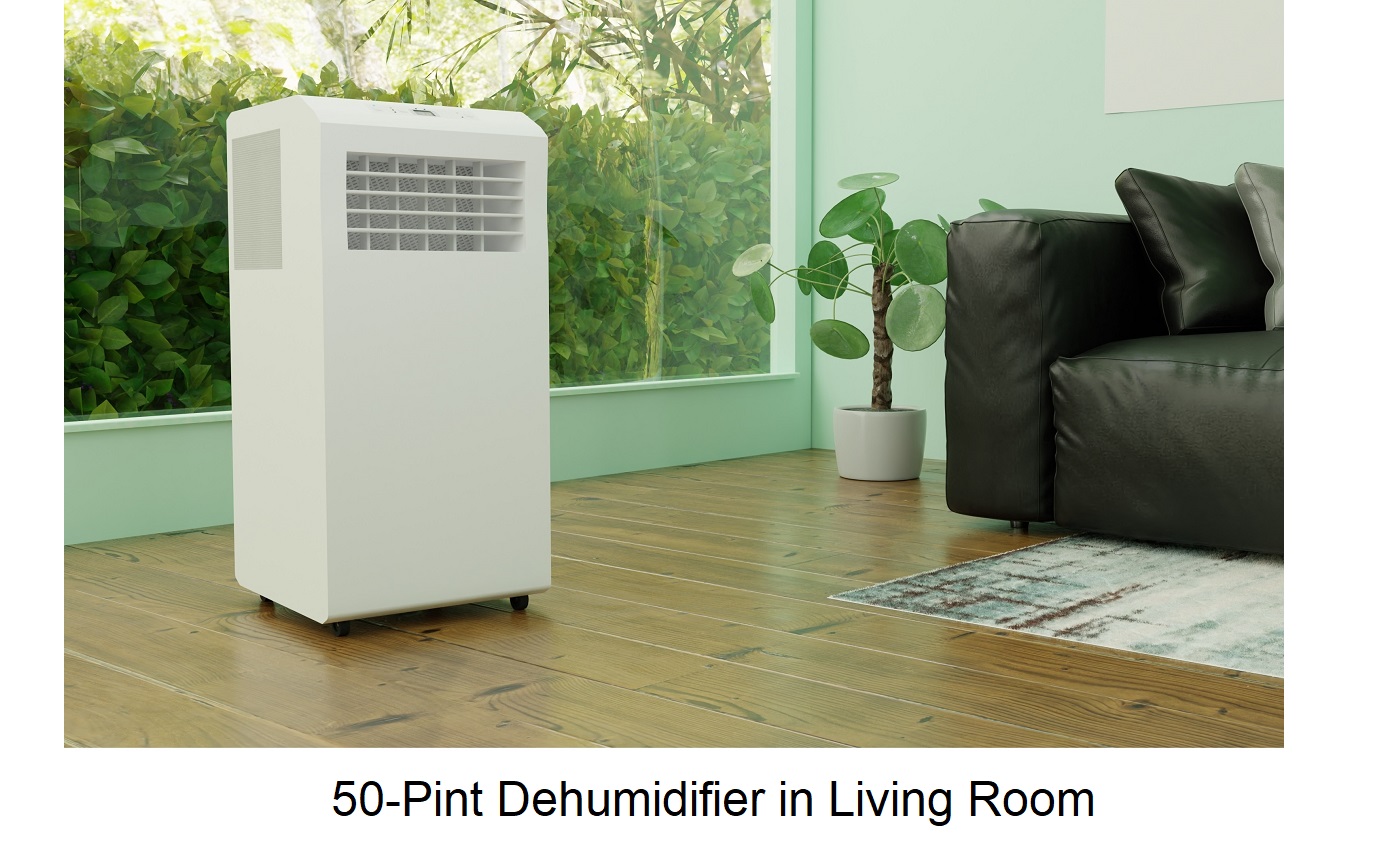
I created the chart below by reading many charts and recording typical values. The values in the charts that I read differ greatly, partly because some of the authors favor you making your home as comfortable as possible and others favor you saving money. This chart shows the lower values, which should save you money.
Also, this chart shows only dehumidifier sizes that are commonly available. Many charts show sizes such as 15 pints/day and 40 pints/day which are practically un-available. Most stores only carry models ranging from 20 to 35 pints/day for use in bedrooms and offices, and 50 pints/day, for use in open basements and large living rooms.
The values in the table below are for conventional “refrigeration cycle” dehumidifiers, not the much smaller Peltier Dehumidifiers.
“Relative humidity” is the amount of water vapor in the air, as a percentage of the maximum the air could hold at that temperature. When the relative humidity is high it is said that the humidity is high.
TYPICAL RECOMMENDED CAPACITIES OF PORTABLE DEHUMIDIFIERS
Buy a Dehumidifier That Uses Less Energy
After choosing a size, check which energy-saving features are available on the models of that size at the stores where you shop. The smaller models have less of these features. These features include:
Check That the Circuit It Will Use Has Enough Capacity
Before buying a portable dehumidifier, check that the circuit it will be plugged into has enough unused electrical capacity. Portable dehumidifiers have power requirements ranging from about 400 watts (3.3 amps @120v) to about 750 watts
(6.25 amps @ 120v). This is printed on the box or given in the Use and Care Manual.
Your 120v outlets will all be for 15 or 20amp circuits. This will be indicated on the circuit breaker by the number 15 or 20 (an electric dryer may have a 30-amp circuit, but the plug for a dehumidifier will not fit into its outlet).
If you have a fuse box, the fuses for the 120 volt circuits will be labelled as 15 amp or 20 amp, but this is not proof of a circuit’s capacity because an incorrect fuse may be installed. The capacity of a circuit can be determined
by the gage of the wire entering the fuse box, 15 amp fuses are used for 14 gage wiring and 20 amp fuses are used for 12 gage wiring (12 gage is heavier than 14 gage).
However, if the fuse is 15 amps and the wiring is 12 gage, it is possible that a section of the circuit is 14 gage, so assume that a 15 amp fuse is the correct fuse and it is a 15 amp circuit.
If the power requirement of a dehumidifier is listed only in watts, compute its requirement in amps by dividing the wattage value by 120v (wattage = amperage x voltage.) For example, if a dehumidifier uses 500 watts, it uses 4.17 amps.To
determine if the outlet you want to use is on a circuit with enough spare capacity for the model you want to buy, turn off the circuit breaker for that outlet. The outlets and lights that lose their power are on that circuit.
Add the wattages or amperages of all the appliances and lights that are at times plugged into those outlets. Basement outlets are occasionally on first or second floor branch circuits, so if a basement outlet is the only outlet or
light in the basement on that circuit, check on the first and second floors.
Buy a 50-Pint or Larger Dehumidifier for an Open Basement
To dehumidify an open basement, a 50-pint model is far more popular than any other size. This is normally the largest available model in home centers. Before buying one, check if it’s wattage requirement is too high for the circuit it will use. Dehumidifiers use amperages similar to room air conditioners, and these normally have their own circuits. Models as large as 70-pint can be ordered at home centers.
Most of the circuits in your home are 15-amp circuits, but your washer will probably be on a 20-amp circuit. If it is in the basement, you may be able to use this circuit.
It may not be expensive to hire an electrician to create a new circuit for a dehumidifier if the dehumidifier can be located close to the main electrical panel. This would also be inexpensive if your basement is unfinished because it would be relatively easy to run the cables.
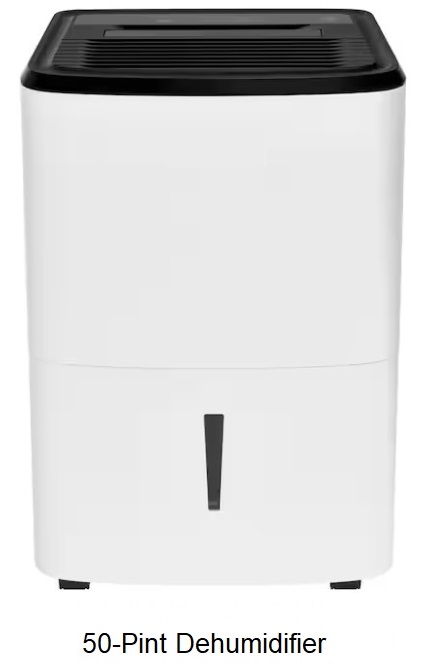
A 50-pint dehumidifier is expensive to operate, so it good to invest in a model with many energy saving features. See, Buy a Dehumidifier That Uses Less Energy.
Most if not all models offer a “continuous drain option”. This lets them drain into a basement floor drain or sump so you don’t need to empty the bucket. Most models do not pump the water up into a sink; to let it drain into a sink you must build a shelf for the dehumidifier above a sink. However, models that pump the water up into a sink are available.
The size of the bucket you must empty varies greatly, from about 2 gallons to much larger.
Buy a Model Rated for Cold Temperatures If Used in a Cold Basement
If the dehumidifier will be in a location where the temperature can fall to below 65°, normally an open basement, buy one rated for low temperatures. Frost can form on the condensing coils if the air temperature drops below about 65°, depending on the model, because the condensing coils are always cold. Frost will insulate the coils so they don’t transfer heat well, making the dehumidifier inefficient, so it runs too many hours per day.
You could buy a model with an “anti-frost sensor”, which turns off the unit when the air temperature drops below a set temperature. Either of these would be a good choice if they are ENERGY STAR rated. If you use a dehumidifier in your basement which is not rated for low temperatures, turn it off if frost forms on the coils because it is wasting electricity.
Estimate the Cost of Using a Portable Dehumidifier
Before buying a portable dehumidifier, you can roughly estimate how much its energy use would cost. First, estimate how many months you would use it and try to estimate what fraction of each day it would run. A dehumidifier should run at least 12 hours per day to be effective, but in a humid basement, it should probably run 24 hours per day.
For each model you consider, find from its label or website the kilowatts (kW) it uses. This may only be given in the Specifications page of the website. This is the energy it uses per hour. If it is given in watts, divide this number by 1000 to calculate kilowatts. Multiply this by your estimate of how many hours per year it would run. This is an estimate of the energy it will use each year in kilowatt-hours (kWh).
Multiply this by your electric rate in cost per kWh for an estimate of the cost of using the dehumidifier each year. Add the cost of occasionally replacing the unit. It may not last long and dehumidifiers are not very repairable.
Energy Tips for Using Portable Dehumidifiers
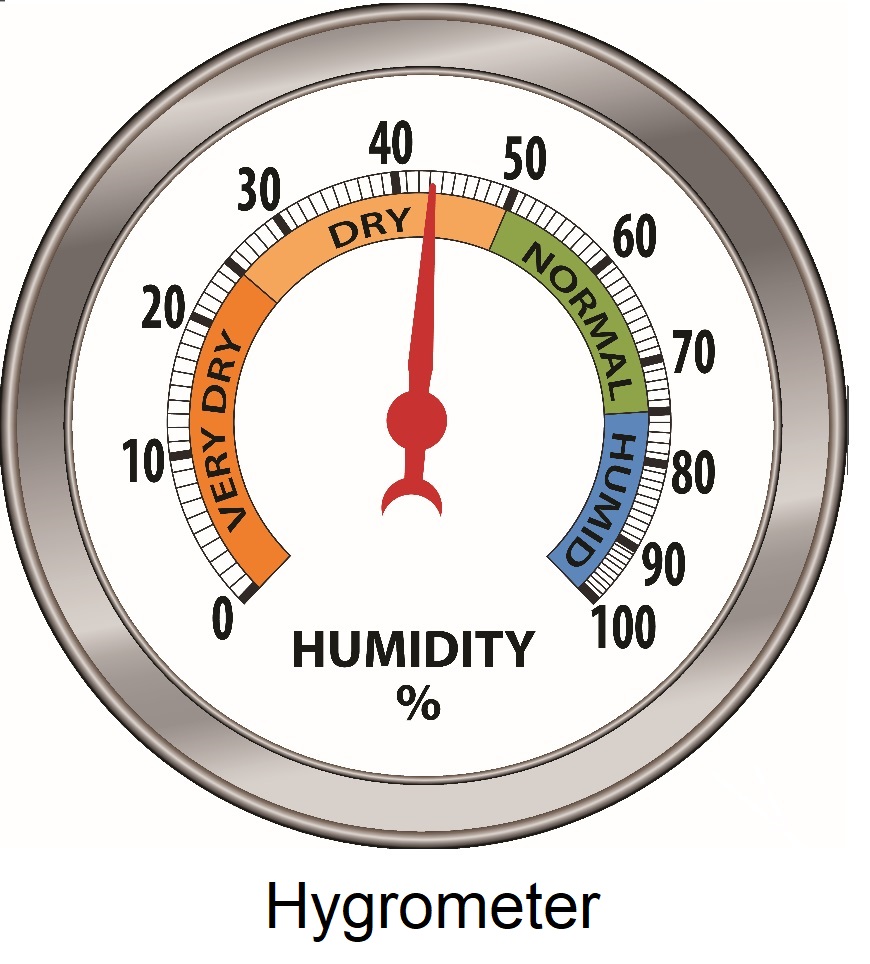
How to Use a Large Portable Dehumidifier in an Open Basement
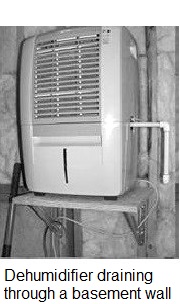
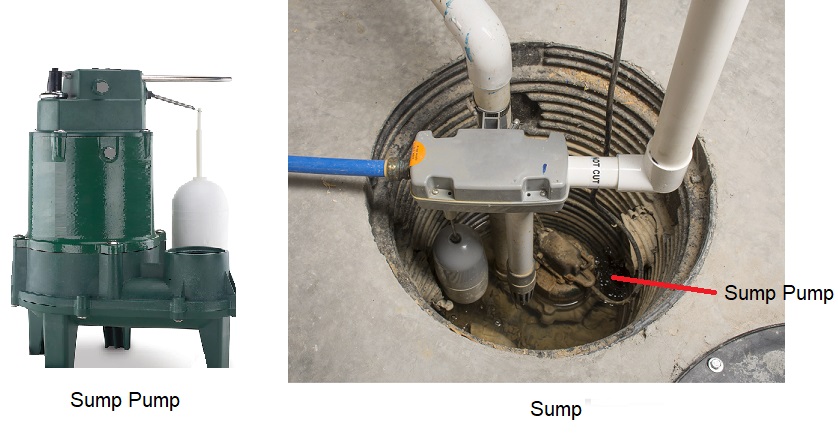
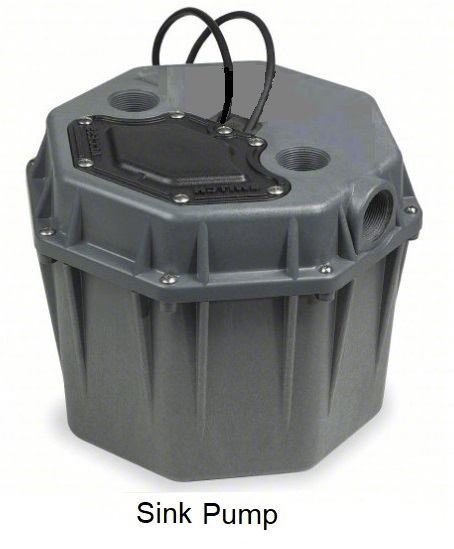
Energy Tips for Using for Whole House Dehumidifiers

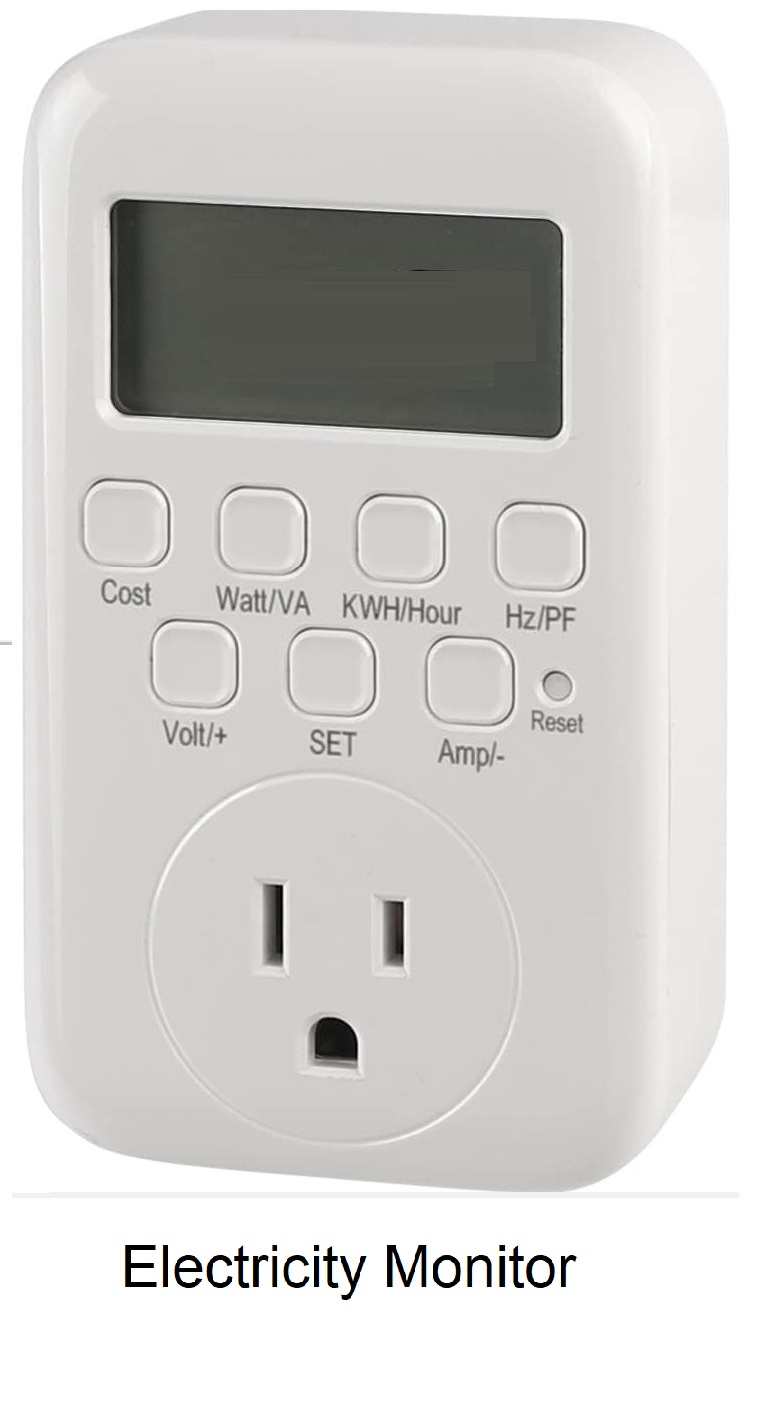
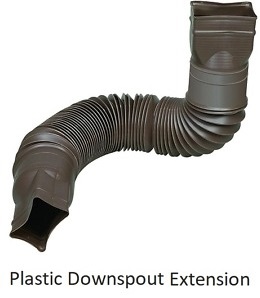
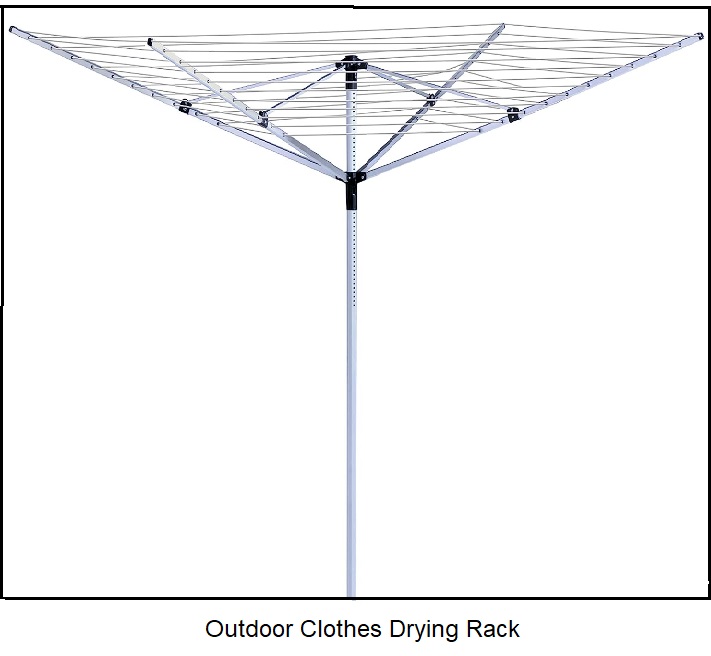
Whether you replace your dehumidifier with a low energy dehumidifier or you only use energy tips suggested above, you will soon be seeing lower energy consumption and lower energy costs from the improvements in your dehumidifier energy efficiency.

No Responses